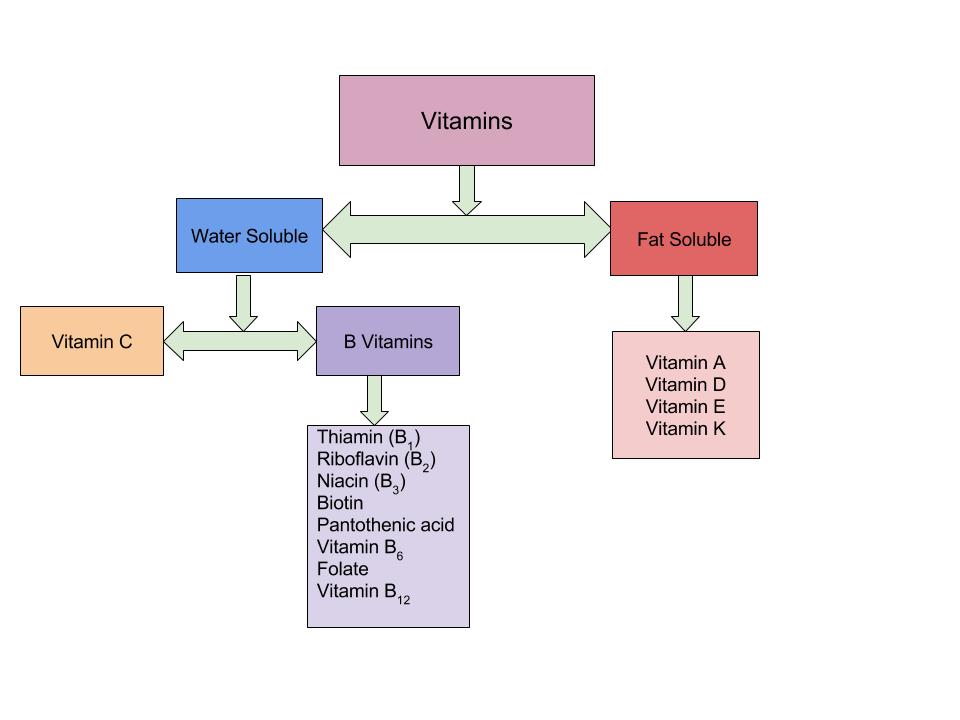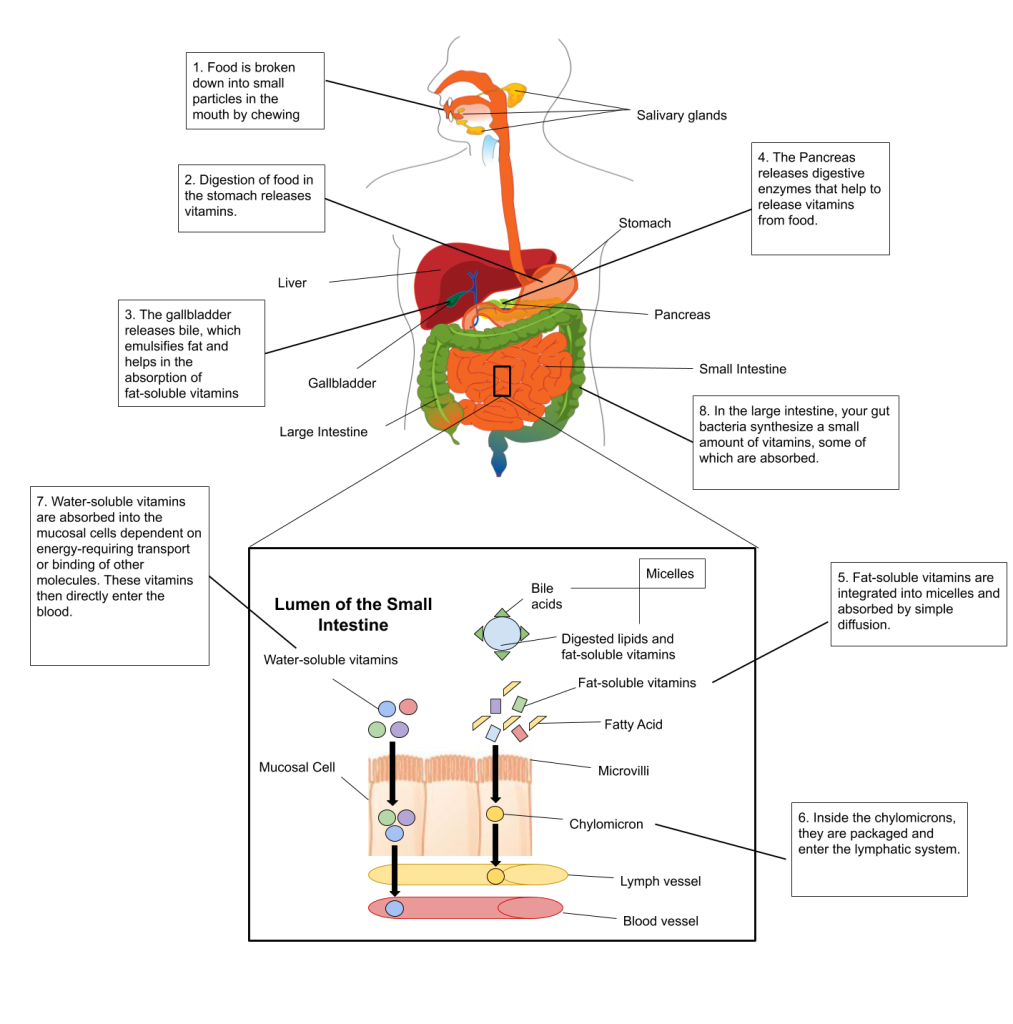Introduction
“The magic of food lies not just in the ingredients but in the heart of the cook.”
~ Chef Paul Prudhomme

Learning Objectives
By the end of this chapter, you will be able to:
- Describe the role of vitamins as antioxidants in the body
- Describe the functions and sources of antioxidant micronutrients, phytochemicals, and antioxidant minerals
- Describe the functions of vitamins in catabolic pathways and anabolic pathways
Vitamins are obtained from the different types of foods that we consume. A vitamin deficiency may occur if a diet lacks a specific kind of nutrient. The traditional diet of Louisiana consisted of a mixture of influences from indigenous, European, and African cultures. This brought about micronutrient-dense meals like corn break, red beans, rice, and deer sausage.
Vitamins are organic compounds that are traditionally classified into two groups: fat-soluble (hydrophobic) and water-soluble (hydrophilic). This classification determines where they act in the body. Water-soluble vitamins act in the cytosol of cells or in extracellular fluids such as blood; fat-soluble vitamins protect cell membranes from free radical damage. The body can synthesize some vitamins, but the diet must obtain others.

(Source: University of Hawaii @ Manoa, Allison Calabrese, CC-BY)
One significant difference between fat-soluble vitamins and water-soluble vitamins is the way they are absorbed in the body. Vitamins are absorbed primarily in the small intestine and their bioavailability is dependent on the food composition of the diet. Fat-soluble vitamins are absorbed along with dietary fat. Therefore, if a meal is very low in fat, the absorption of the fat-soluble vitamins will be impaired. Once fat-soluble vitamins have been absorbed in the small intestine, they are packaged and incorporated into chylomicrons along with other fatty acids and transported in the lymphatic system to the liver. Water-soluble vitamins on the other hand are absorbed in the small intestine but are transported to the liver through blood vessels.

(Source: University of Hawaii @ Manoa, Allison Calabrese, CC-BY)
Learning Activities
Technology Note: The second edition of the Human Nutrition Open Educational Resource (OER) textbook features interactive learning activities. These activities are available in the web-based textbook, not downloadable versions (EPUB, Digital PDF, Print_PDF, or Open Document).
Learning activities may be used across various mobile devices; however, for the best user experience, it is strongly recommended that users complete these activities using a desktop or laptop computer.
The amount of a dietary nutrient that is absorbed and utilized by the body.
The lowest density lipoprotein particles which contain triglycerides, monoglycerides, and small amounts of cholesterol and phospholipids.

